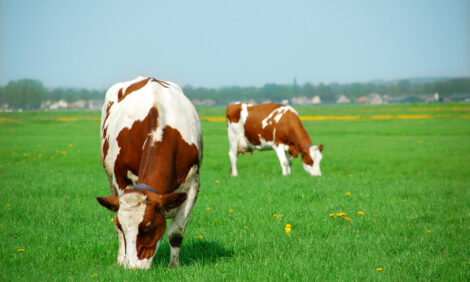



Botswana Milk Running Dry
BOTSWANA - A major shortage of milk is expected to hit Botswana by 2010 unless the government can revive the industry by increased capability and persuading farmers to turn to dairy.| Botswana was hit by a shortage of milk last year Photo: StockXchange |
In an interview, head of dairy section in the Ministry of Agriculture Mr Lebane Nthoyiwa said Botswana still had a long way to go to achieve self sustenance in milk production.
This is in spite of the fact that the market for milk and milk by-products remains largely unexploited.
Mr Nthoyiwa says government needs to intervene to avert a crisis resulting from South Africa, the major supplier, stopping milk exports in 2010.
South Africa is expecting to host millions of tourists in 2010 because of the FIFA World Cup.
Botswana was hit by a shortage of milk last year.
Mr Nthoyiwa challenges Batswana to venture into dairy farming to fill the gap created by under supply of milk in the market.
He also wants the dairy herd at a NAMPAADD farms to be increased to avert shortage.
At present, Botswana dairy farmers produce only 48 per cent of fresh milk consumed in the country while the bulk of the processed milk is imported mostly from South Africa.
Lack of infrastructure in the form of roads and electricity are some of the challenges facing dairy farmers The fact that milk production is highly capital intensive compounds the problem.
Mr Nthoyiwa contends that a viable dairy initiative costs around P2 million to start. A dairy farmer, he says, needs to be focused and well equipped with management skills.
Mr Nthoyiwa expressed concern that though government undertakes initiatives to equip farmers with necessary dairy management skills, most of them preferred to delegate which defeats the objective.
Botswana currently has 5000 dairy cows but at any given time only 33 per cent of them are producing milk instead of at least 80 per cent.
This state of affairs, he says, is very disappointing. In addition, some dairy farmers do not observe the prescribed feeding regimes and end up producing far below their potential.
While a well-fed cow is reported to be capable of producing between 50 to 60 liters of milk per day, most dairy cattle around Jwaneng produce below 10 liters a day.
Naledi based dairy farmer, Mrs Sedijame Dingalo acknowledges that most dairy farmers perceive milk production as just another farm activity, a situation which impedes the full exploitation of opportunities offered by the sub-sector.
She is one of the few farmers that are still in production despite huge challenges that range from lack of capital to poor management.
She maintains a herd of 30. Mrs Dingalo says dairy farming has been highly mechanised because of the high hygiene standards required.
She therefore decried lack of capital to produce milk on sustainable commercial scale.
Jwaneng-based dairy officer, Mr Rhemsden Ramalepa identified poor management practices, perennial droughts and poor marketing strategies as the main factors impeding the growth of dairy farming.
He called for proper feeding strategies and regular supply of fresh water. Another problem, he said, was that some farmers were reluctant to ask for loans from financial institutions. BOPA
TheCattleSite News Desk


